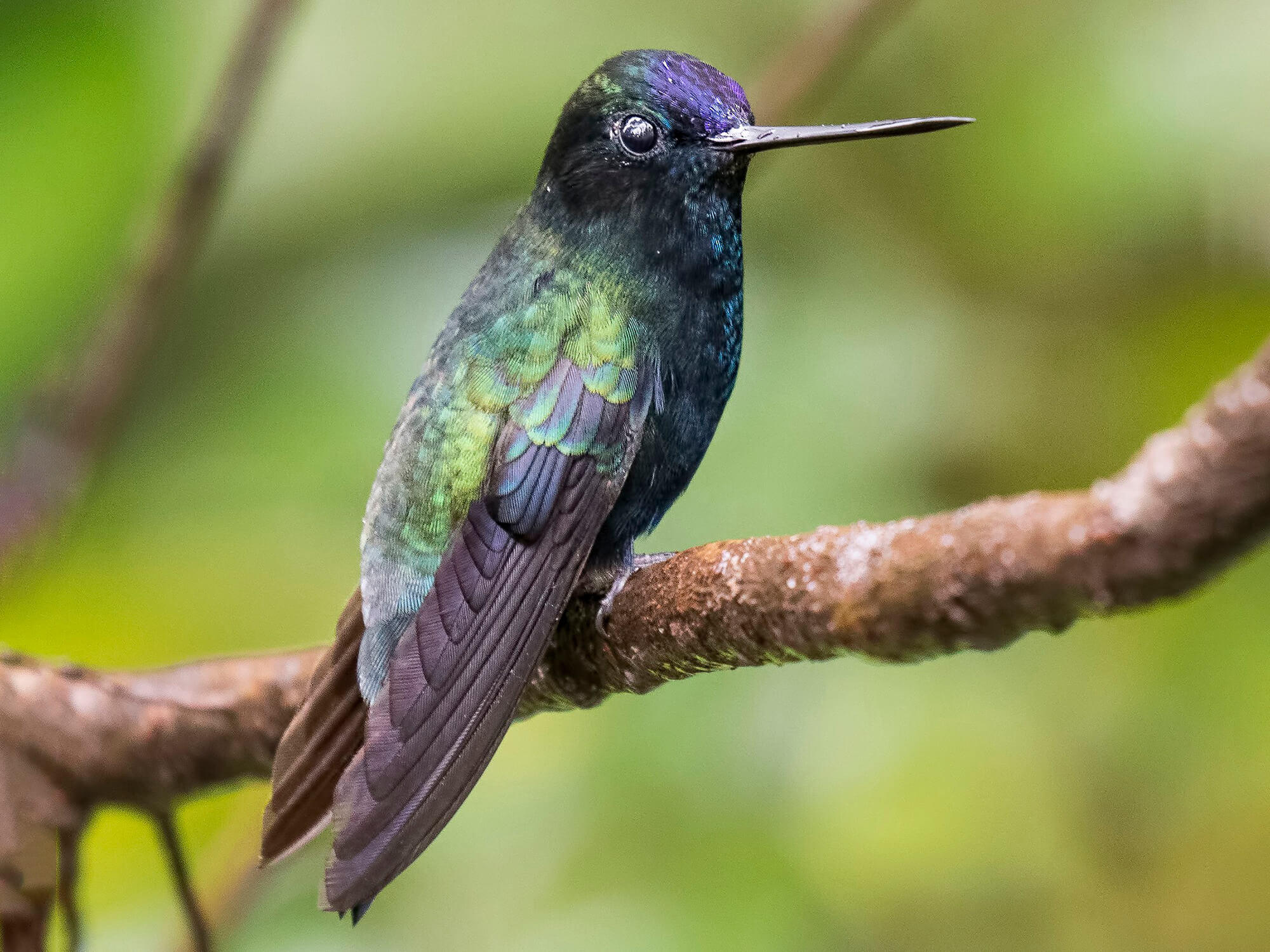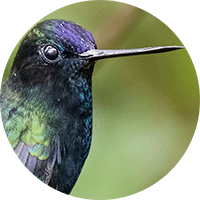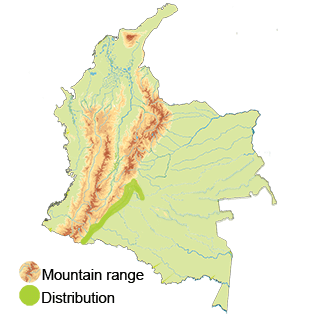Blue-fronted Lancebill
The Blue-fronted Lancebill (Doryfera johannae) is a species of hummingbird found in the Andean regions of Colombia. Read in Spanish
Appearance: The Blue-fronted Lancebill is a medium-sized hummingbird with distinctive features. It has striking iridescent green plumage on its upperparts and a vibrant blue forehead, which gives it its name. The throat and breast of the bird are a shimmering blue-violet color, and the underparts are white. The bill is long, straight, and slender, adapted for feeding on nectar.
Habitat: The Blue-fronted Lancebill inhabits montane forests, cloud forests, and forest edges in the Andean region. These birds are found at higher elevations, between 1200 to 2400 m above sea level.
Behavior: Blue-fronted Lancebills are known for their agile flight and energetic foraging behavior. They feed on nectar from flowers using their specialized long bills. They are also known to catch insects in mid-air for protein. These hummingbirds are often seen darting among flowers and perching on branches within their forest habitats.
Breeding: The breeding biology of the Blue-fronted Lancebill involves courtship displays by males to attract females. They build small cup-shaped nests made of plant fibers, moss, and lichens, often situated on tree branches or other elevated locations. The female lays one or two eggs, and both parents participate in feeding and caring for the offspring.
Conservation Status: The Blue-fronted Lancebill is classified as of Least Concern on the Red Book.
Distribution
The Blue-fronted Lancebill (Doryfera johannae) is primarily found in the Andean regions of Colombia. Specifically, these hummingbirds inhabit montane forests, cloud forests, and forest edges in the Eastern Colombian Andes. These mountainous habitats provide the necessary environmental conditions, such as floral resources and suitable nesting sites, for the Blue-fronted Lancebill to thrive.
Taxonomy
The Blue-fronted Lancebill (Doryfera johannae)
- Kingdom: Animalia
- Phylum: Chordata
- Class: Aves (Birds)
- Order: Caprimulgiformes
- Family: Trochilidae
- Genus: Doryfera
- Species: Doryfera johannae
Vocalization
The Blue-fronted Lancebill (Doryfera johannae)
The vocalizations of the Blue-fronted Lancebill may include short tsip or chirp notes, often used to communicate with other individuals or to establish territory boundaries.
Hummingbirds, including the Blue-fronted Lancebill, also engage in aerial displays and chattering noises as part of their courtship rituals. These displays can involve high-pitched sounds and rapid wingbeats as the males try to attract females during the mating season.





